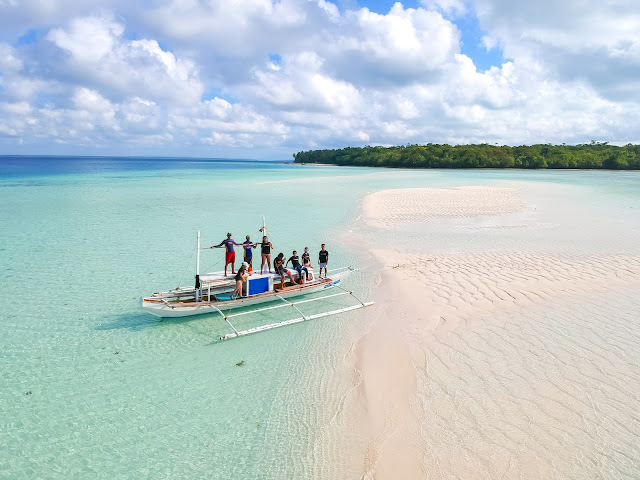With more than 7,500 islands across the Philippine archipelago, skipping the ferry and booking a few days on an island hopping boat tour is the best way to find your own slice of paradise during your trip. Idyllic white sand beaches, hidden coves, and beautiful coral reefs await, but choosing and budgeting for a tour that’s right for you requires a good amount of research and planning.
Group vs Private Tours
One of your first key decisions will be whether to take a group tour or arrange your own private itinerary with a local operator. There’s a lot of competition between local companies, some more centred around snorkelling and marine life, with others focused towards landing you on the island’s best beaches, so you’ll have an array of options to choose from. Group day tours start from as little as £20, which can also include lunch and drinking water on board.
Budget permitting, undoubtedly the best way to experience the Philipinne islands is with your own private tour, putting you in control of your own schedule, ideally avoiding peak times and some of the larger crowds at the more popular islands such as Palawan’s El Nido or Coron.
Private day tours start from around £150 for two people including lunch, whereas all inclusive multi-day day trips can set you back anywhere up to around £1,000 per person based on 4 days, 3 nights.
Budgeting for Extras
Once you’re getting closer to choosing your tour, understanding what is and isn’t included is a very important part of your budgeting. Visiting numerous small islands, it’s crucial that you never find yourself left without the funds or appropriate payment method for an unexpected expense. As Asia is a region known for adding processing fees for using foreign cards, you’ll want to make sure you understand the associated costs of using a credit card abroad, as it will often work out cheaper using cash for smaller, spontaneous purchases during your boat trip.
With so much variety on offer, extras can include anything from basics such as lunch, snorkel equipment and fins, through to kayak hire, and even additional entrance fees to visit some of the more sought after lagoons. You’ll also have to pay environmental tax, however once paid, your pass is valid for up to 10 days.
Our key tip is to research ahead of time and have a loose budget in mind before heading into any conversation with a tour operator. It’s easy once you’re in there to get carried away, ending up agreeing to a wealth of extras that you don’t really need. You want to make sure you’ve still got some funds left for the rest of your trip.
Once you’re clear on what’s not included, your tour operator is your best point of call for an estimate of how much extra you can expect to spend throughout your tour. However, it’s always worth carrying a little extra, should you find a local jewellery store or craft maker, and decide you want to grab a custom piece to remember your trip and support local business.
Try to Negotiate
Depending on the amount of time you have, as well your bartering skills, it can really pay dividends to shop around a little before settling on a tour operator. We’d suggest speaking to at least 2-3 operators to get an idea of how consistent their pricing is. As we mentioned, competition is high so there may be some wiggle room in the final cost versus their advertised prices. If during your negotiations you decide to exclude lunch in an attempt to reduce costs, bear in mind that some islands do have limited options for purchasing food, especially if you have particular dietary preferences.
Something to be mindful of when comparing offers from various operators, is ensuring the package is like-for-like and includes the same extras. Additionally, If one company is quoting a significantly cheaper price, it’s worth a quick internet search of customer reviews to check on the company’s integrity and reputation.
Ultimately, our advice is to not make your decisions in haste, choosing the first operator you speak with. Explore your options, check out customer reviews, and there’s no harm in asking for a bit of discount, particularly if you’re purchasing certain extras or multiple tours.
Paying for your Tour
Being smart about how you choose to pay can make a significant difference to the total cost of your Philippine boat tour. As we mentioned, it’s commonplace in Asia for operators to add a card processing fee.
Depending on what payment methods your tour operator will accept, you can often make your money go further by considering paying by bank transfer, especially if you’re looking at higher-end multi-day boat trips. It’s important to weigh up other factors such as security and your level of buyer protection with alternative payment methods, but considering bank transfer as a payment method could save you some serious funds while travelling through paradise.
Key Takeaways
However you decide to explore the Philippine islands, you’re bound to create memories that will last a lifetime. El Nido and Coron are just the highlights of more than 50 world class beaches and snorkelling destinations to choose from.
Doing a bit of research ahead of time on both tour variety and payment options, will not only help you find the tour that’s right for you, but might also help you make some significant savings for a few extra cocktails once you’re back on dry land.



0 comments :
Post a Comment
Looking for Budget Travel Guide Blogs, Hotel Reviews, and Sample DIY Itineraries?
Welcome to Pinoy Adventurista, "Your Next Ultimate Adventure Starts Here!"
Pinoy Adventurista is one of the Top Travel Blogs in the Philippines and the World. In 2013, he visited all the 81 provinces in the Philippines.